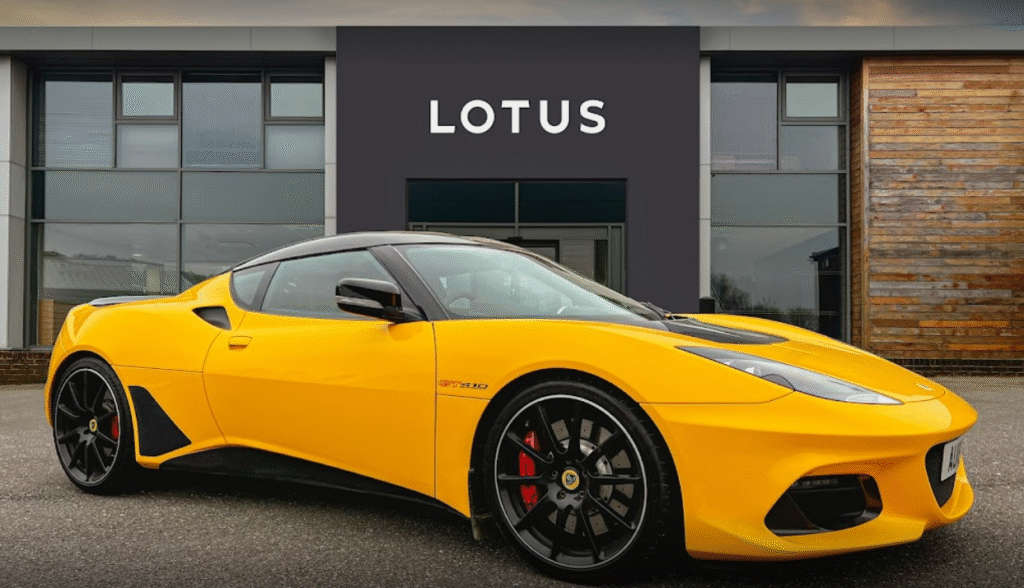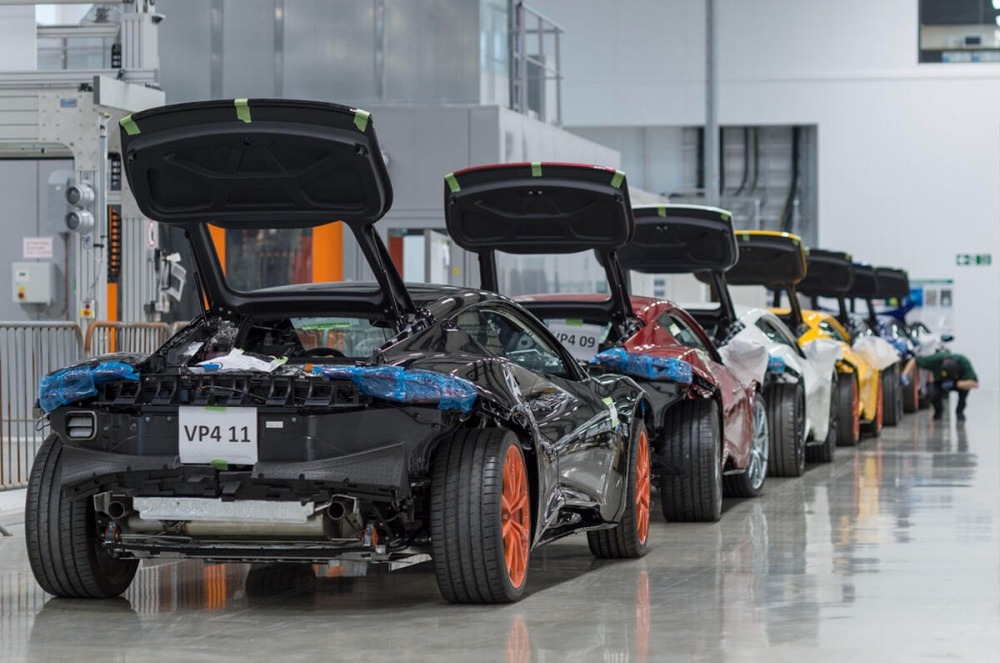Ever felt your heart race just thinking about a Lotus Elise carving up a twisty road? Yeah, me too. So when I heard whispers that Lotus might close its iconic UK factory in Hethel, Norfolk-home to nearly 60 years of lightweight, driver-focused magic-I nearly spit out my coffee.
The rumor mill, fueled by Lotus’s Chinese parent company Geely eyeing a shift to Volvo’s South Carolina plant, has fans freaking out over 1,300 jobs and the brand’s British soul.
But Lotus swears Hethel’s not closing; it’s just a pause since May 2025 to sort out tariff and supply chain headaches. Still, this whole saga could mean big savings for car buyers like us.
From dodging U.S. tariffs to streamlining production, here are six ways Lotus’s production plans could put thousands back in your pocket while keeping those sports cars razor-sharp.
Unpacking the Hethel Factory Drama

Let’s get the lay of the land. Lotus’s Hethel factory, a British icon since the 1960s, employs 1,300 folks building cars like the Emira and Evora. Rumors swirled that Geely wants to move production to Volvo’s U.S. plant to sidestep hefty U.S. import tariffs-think 25% or more on cars coming from the UK.
That’s a big deal when you’re selling six-figure sports cars. Lotus hit the brakes on these rumors, saying Hethel’s still pumping out cars, but a production pause since mid-May 2025 to manage inventory and supply issues has kept the chatter alive.
Why does this matter for your wallet? Tariffs jack up car prices-sometimes by $5,000 or more per vehicle. Producing in the U.S. could slash those costs, making that dream Lotus more affordable.
Plus, it’s not just about money; it’s about keeping Lotus competitive in a world where supply chains and trade wars mess with carmakers. Want to know more about tariffs hitting the auto world? Check out our post on global car market trends.
Tariff Dodging Means Cheaper Lotuses
Here’s the juicy part: U.S. tariffs are like a tax that slaps thousands onto imported cars. By potentially building in South Carolina, Lotus could skip those fees, saving buyers serious cash.
Say you’re eyeing an Emira at $100,000; a 25% tariff adds $25,000 to the sticker. Producing stateside could cut that premium, putting $5,000 to $20,000 back in your pocket, depending on the model. That’s enough for a killer road trip or a new set of tires.
I remember drooling over a Lotus Evora a few years back, but the price tag-plus import costs-made me cry into my ramen. If Lotus pulls this off, it’s like getting a Black Friday deal on a sports car.
Lower prices could also mean more Lotuses on U.S. roads, which is a win for every gearhead who loves spotting a rare Elise in the wild.
Streamlined Production, Lower Costs

Moving production to a modern facility like Volvo’s could be a money-saver for Lotus, and those savings might trickle down to you. The South Carolina plant is a high-tech marvel, churning out Volvos with robotic precision and efficient assembly lines.
Lotus could tap into that to cut manufacturing costs-think fewer delays, less waste, and cheaper logistics. For buyers, that could mean sticker prices that don’t climb as fast as my heart rate on a track day.
Plus, a stable supply chain is gold. Lotus’s pause in Hethel was tied to supply chain snags, like chip shortages or delayed parts, which can bump up costs. A U.S. plant closer to suppliers could keep things humming, potentially shaving hundreds off the MSRP.
I once waited six months for a part for my old Miata-pure torture. A smoother operation could mean better deals and faster delivery for your next Lotus.
Keeping Quality High Without Breaking the Bank
Now, let’s address the elephant in the room: will a U.S.-built Lotus still feel like a Lotus? Fans on Reddit are freaking out, worried that moving production might dilute that Hethel magic.
But Volvo’s plant isn’t some back-alley shop-it’s a state-of-the-art facility with rigorous quality controls. Lotus’s UK engineering team will still design the cars, ensuring that featherlight handling stays intact.
A modern plant could actually improve build quality, reducing those annoying rattles or electrical gremlins that sometimes plague niche sports cars.
This matters for your wallet because better quality means fewer repairs. A single trip to the shop for a faulty sensor can cost $500–$1,000. I learned this the hard way when my buddy’s Lotus had a glitchy ECU that cost a fortune to fix.
Tighter production could save you those headaches and keep your car’s resale value strong. Curious about Lotus’s quality history? The Lotus forums on PistonHeads have some spicy owner stories.
Safety Gets a Boost with Modern Tech
Here’s where it gets practical: safety. While Lotus hasn’t flagged specific safety issues, a U.S. plant would align with strict NHTSA standards, potentially adding features like advanced airbags or better crash structures.
Volvo’s South Carolina facility is built for safety-first cars, so Lotus could borrow some of that expertise. It’s like giving your Emira a suit of armor without losing its nimble soul.
I’ll never forget a close call in my old sports car when a deer jumped out-thankfully, good brakes saved me. Modern safety tech, like automatic emergency braking, could make Lotuses even safer, and a U.S. plant might integrate these features more seamlessly.
That’s peace of mind worth thousands in avoided accidents. Check out NHTSA’s safety standards for the latest on U.S. regulations.
More Lotuses, More Choices for Buyers
A U.S. production shift could mean more Lotuses hitting the market, especially in America. Right now, Lotus’s low-volume Hethel setup limits how many cars reach U.S. dealers.
A bigger plant could ramp up output, improving availability and potentially lowering prices through economies of scale. Imagine walking into a dealership and actually seeing an Emira in stock, not just a brochure.
This also means better support for owners. More cars could lead to more service centers and parts availability, saving you time and money on maintenance. I once hunted for a Lotus part like it was a rare Pokémon-never again. A U.S. base could make owning a Lotus less of a treasure hunt.
Staying Ahead as a Lotus Fan
As enthusiasts, we’ve got to stay sharp. If Lotus shifts production, keep an eye on X or Reddit’s r/cars for real-time updates from other owners. Join a Lotus club to swap tips on keeping your car’s performance and value high.
I’ve learned so much from forum buddies about everything from tire choices to avoiding costly repairs. Also, check your local dealer for updates on model availability-U.S. production could mean shorter wait times for that dream car.
Wrapping It Up

So, there you have it-six ways Lotus’s UK production closure plans could save you thousands. From dodging tariffs to boosting quality and safety, this strategic shift might make your next Lotus more affordable and reliable.
Sure, the idea of Hethel pausing stings, but the payoff could be worth it. My advice? Stay plugged into enthusiast communities and pester your dealer for updates.
As one X user said, “Lotus might move, but those curves still hug the road like nobody’s business.” Keep dreaming of that perfect drive, and maybe, just maybe, it’ll cost youહ
